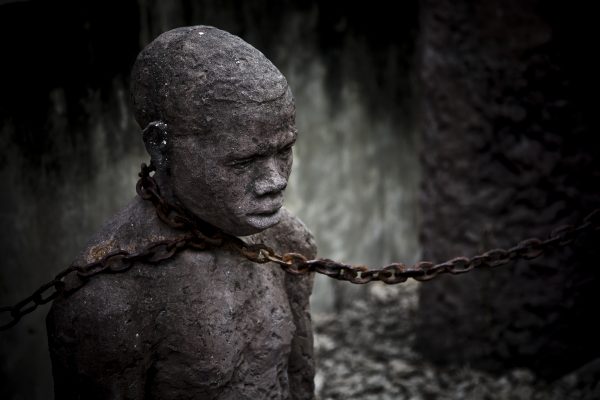Salman al-Farsi’s story is the most fascinating of any Sabaha. From Zoroastrian to Christian, to slave to Muslim, Salman’s life took him across four countries before he eventually found Islam.
Salman al-Farsi’s story is the most fascinating of any Sabaha. From Zoroastrian to Christian, to slave to Muslim, Salman’s life took him across four countries before he eventually found Islam.
Salman al-Farsi is one of the most unique sahabi of the Holy Prophet (PBUH). He is one of the few first-generation close sahaba that were not Arabs. His journey to Islam is truly fascinating. The following is a brief account of his life taken from ahadith found in Sahih al-Bukhari, Musnad ibn Ahmad and a few others.
Salman’s Early Life
Salman was Persian. He grew up in Iran while its Sassanid Empire was at the peak of its power. Salman was raised a Zoroastrian. Zoroastrians are people who believe in two gods. One good god and one evil good. Their belief is that the good god will conquer the evil god at the end times. The good god is represented by light or fire whilst the evil god is represented by darkness. That is why Zoroastrian temples have a pit of fire – to present the good god.
As far as history tells us, Salman’s name was always Salman, and he kept it throughout his life. He was born in a small village in Iran. Salman’s father was a landlord who owned multiple plots of land. He would lease them to farmers and earn rent. Salman’s family was extremely rich, and he lived a very comfortable life.
Salman’s dad was very protective of him. He would not let Salman leave the house and kept him coddled at home. Salman did have one responsibility, which was to ensure the fire in the Zoroastrian temple was kept alive. The Zoroastrian belief is that this fire was originally kindled when creation began, and it is this same fire that has been preserved and shared across all Zoroastrian temples.
Salman Finds Christianity
Although Salman’s dad never him out of the house, one day, he was compelled to. His dad was very busy with other work, so he tasked Salman to collect the run from one of his plots of land. His dad strictly told him to get the rent and come back before sunset.
On the way to collect the rent, Salman passed by a church playing hymns. He found the hymns attractive, so entered the church. Salman enjoyed the company of the Christians so much that he stayed there all day and forgot about collecting the rent! Salman’s dad got worried and sent a search party.
By the time Salman left the church, he had decided to convert to Christianity. He went home and told his dad what happened. He explained that Christianity is a better religion than Zoroastrianism, but his father was not convinced. Worried about his son changing religion, he tied down his legs with an iron change preventing him from ever leaving the house.
Salman did not practice the Christianity we see today. He practised a minority sect of Christianity known as Nestorianism. In short, Nestorianism believes Jesus was human but was ‘adopted’ by God. They don’t believe Jesus to be the biological son of God, but the adopted son. Only a small minority believe this, but the sect still exists today.
Salman Moves to Syria
Salman planned to escape. He tells his servant/maid to let him know whenever a caravan is going to Syria so he can escape with them and practice his religion in a monastery there. When Salman is informed of a caravan that matches the description, he frees himself and joins the caravan.
When he got to Syria, Salman asked to meet the greatest scholar in the land. They introduced him to one of the great Christian monks. Salman told the monk his story, and the monk let him stay in the monastery. Salman became a monk and received a seal of approval from this great scholar, which allowed him access to any church/monastery on Earth.
Things turned for the worse when Salman found this scholar to actually be evil. The scholar would collect charity but keep it for himself. Salman knew where he did the charity but didn’t say anything until this evil scholar died. When he died, Salman exposed him to all the people of the monastery. People were so angry they dragged the dead body of the scholar, placed him on a cross and stoned him.
The successor to the evil scholar was, in fact, a good man and Salman trusted him. After some time, this scholar was breathing his last. There was nothing left for Salman here as nobody remained for him to learn from. Before passing away, Salman asks this scholar for some advice on where he can go to further his religious knowledge. The scholar recommended Salman to go to Mosul.
Salman in Mosul
Salman arrives in Mosul to learn from the greatest scholar in the area. The same thing happens. This scholar dies but, before dying, tells Salman where to go next to further his knowledge. This cycle happened a few times. The most knowledgeable scholar would die but tell Salman where to go next.
When his fifth or sixth teacher dies, Salman is told that there is nobody left for him to learn from but before dying, his teacher tells him that he is very close to the time of the appearance of a Prophet who will bring the religion of Ibrahim and he gives Salman the signs to recognise this Prophet, which is the following:
- He is someone who does not accept sadaqah but will accept hadiyah (gifts)
- He will have the sign of khatimi nabi between his shoulder blades
- He will live in a land of date palms
Salman Arrives in Arabia
Salman has no idea where to go. The signs are vague, but perhaps the most conclusive sign is that this Prophet to come will live in a land of date palms. He can’t really test the other signs until he meets the Prophet. Salman takes the chance to go to Arabia.
Salman asks the different travelling tribes where they are going. The first tribe that says they’re going to a land of date palms is the banu kalb. He joined them, but they betrayed him. Although they take Salman to where he wants to be, they sell him as a slave to the tribe of banu quraydha in Media (known as Yathrib at the time). The only saving grace for Salman is that he’s finally in the land of date palms and has certainty that the Prophet will appear there.
Salman Works as a Slave
Salman’s main responsibility as a slave was to plant and maintain date gardens. One day he was high up a tree when he heard his owner and the owner’s cousin talking about the arrival of a man in Yathrib (Medina) calling himself the Prophet. Salman was overjoyed, jumped down from the tree, interrupted this conversation and started asking questions. By doing so, he broke ‘master-slave’ protocol and was beaten and told to mind his own business.
Salman Meets The Prophet Muhammad
At nightfall, Salman gathered his things and went to the Prophet, who at that time was in Quba, an area just on the outskirts of Medina (today, Quba has become part of Medina). He approached the Prophet but needed to figure out if he truly was the Prophet. The first sign was already met – that he lives in an area of date palms. Now he had to test the other three signs – does the Prophet take sadaqa, does he take hadiya and does he have the seal of the Prophets sign between his shoulder blade?
Salman presents dates to the Prophet as sadaqa. The Prophet rejects the sadaqa but distributes it to his companions. The second sign ticked!
After a few days, when the Prophet and his companions from Mecca settled in Medina, Salman approached the Prophet with more dates, this time with the intention of it being hadiya. This time the Prophet accepts. The third sign ticked!
The last sign, the seal of the Prophets inscription, was harder to determine, but Salman eventually saw it. The Prophet was attending a funeral. Throughout this entire day and funeral, Salman tried his best to walk behind the Prophet, hoping his upper garment may slip at some point to reveal the sign.
After a while, the Prophet realised what Salman was doing, revealing the inscription to him. Upon seeing this, Salman was overjoyed. He kissed the Prophet and hugged him. The Prophet asked Salman about his story and journey, to which he explained.
Salman Set Free as a Slave
Salman’s duties as a slave prevented him from participating in the battles of Badr and Uhud. For Salman to fully immerse himself in the mission of the Prophet, he would have to be freed. He told his owner he wanted to free himself and enquired about the cost. The owner said he could free himself if he planted 300 date palm trees and paid him 40 grams of silver.
Salman informs the Prophet. The Prophet gets his companions to donate as many date palm seeds as possible. They keep donating until it reaches 300. The Prophet specifically tells Salman to dig 300 holes but to NOT plant the seeds. Salman follows the Prophet’s orders. Once Salman and the companions dug 300 holes, the Prophet himself planted seeds in each hole!
Now with the issue of 40 grams of silver. Luckily (or thanks to Allah’s will), a companion came across some gold under the sand. The weight of the gold didn’t quite equal the equivalent of 40 grams of silver. That’s when a miracle happened. The Prophet took the gold and placed it in his mouth. After he took it out, the gold equals 40 grams of silver. And Salman was free.
Salman’s Idea at Khandaq
As Salman was free, he could participate in the Prophet’s activities, whether it was propagating the religion or protecting it. At the Battle of Khandaq (the battle of the ditch/trench), it was Salman’s idea to build the ditch that would prevent the Quraysh from entering Medina. It was a classic Persian war tactic that the Arabs were unfamiliar with. The Prophet agreed to try out this strategy, which led to the Muslim’s victory.
The Prophet Claims Salman
During battles, the ansar and muhajireen would fight against the enemies in teams. With Salman belonging to neither, both tribes would fight to ‘claim’ him. That’s when the Prophet interjected and claimed Salman for himself. The Prophet said Salman is from his Ahlulbayt, i.e. his close family member. This is an incredible honour that belongs to no other sahabi.
Salman After the Prophet’s Death
After the Prophet’s death, Salman’s life completed full circle. When Islam conquered Persia, Salman was chosen as the governor. The place he escaped from ended up being the place he ruled!
Salman lived a very humble life despite being a governor. Initially, he lived under a tree until some of the people built him a small house. Salman specifically requested a small house and didn’t want the glam and sham that a leader is typically accustomed to. He treated his servants very nicely, not making them do too much work and even had a side job of weaving and selling baskets to earn a living.
People didn’t recognise him as a governor. One day a man thought Salman was an ordinary citizen and asked him to help carry his luggage. Salman obliged without any fuss. When others saw Salman carrying the luggage, they begged to help. The man who initially asked Salman was also embarrassed, yet Salman said he would continue carrying the luggage as he was committed to it.
Salman Passes Away
Amazingly, Salman knew when his time had come. One day he told his servants to perfume the entire house and not cook any food because he was expecting guests that love good smells but will never eat food, i.e. angels. Salman also told the servant to keep all the doors open to welcome the angels, as he didn’t know from which door they would enter.
The servants found him asleep – where in fact, he had died. Historians say he passed at some point between 37-39 AH.
Salman’s Legacy
We love hearing convert stories, and Salman had an exceptional one – if there ever was one! But what is truly great about Salman is that he always had a sincere desire to learn the truth – even as a Zoroastrian and a Christian – he was sincerely after the truth to the point it took him from Iran to Syria to Iraq and eventually Medina.
And Allah (SWT) will never turn away the sincere seeker of knowledge.





